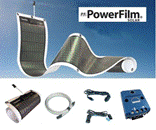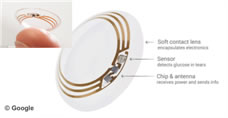Flexible and Organic Electronics
Traditionally when we think of electronics, we think of single crystal Si-wafer based integrated circuits (ICs), single crystal or polycrystalline Si based solar cells or large area glass based displays. These traditional forms of electronics have been at the forefront of revolution in devices such as displays, lighting and solar energy.
However, in past decade or so, another form of electronics that is not based on rigid substrates (Si-wafer or glass) has emerged and is poised to change the way we interact with electronics all around us. Electronics on thin flexible sheets can be more robust compared to traditional electronics and can be applied to any surface, be it straight or rigid and can be bent without losing its functionality. Some examples of this type of electronics could be flexible (roll-able) displays, smart ID tags, smart packaging, flexible and decorative lighting, flexible sensors for health care and robotics (artificial skin), flexible solar cells, which can be applied to any type of surface to name a few. Applications of this new kind of electronics which can be applied anywhere, are only limited by our imagination. A key driver to this particular area is the flexibility and light weight of materials and devices as well as their potential to be fabricated using large area high throughput processing such as printing methods. While this new type of electronics will not replace the traditional Si-wafer based electronics, it is likely to augment it in various ways by providing a different kind of user-interface and a large range of novel applications.
|
|

|
| |
| |
|
|







